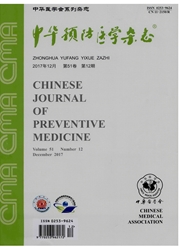

 中文摘要:
中文摘要:
青春期在个体生命历程中不仅是体格发育的重要时段,也是神经内分泌变化的关键期.下丘脑-垂体-肾上腺(HPA)轴作为重要的神经内分泌轴,其在青春期的功能变化及对身心健康和情绪症状的影响越来越值得关注,然而目前对其发育模式与昼夜节律变化的了解知之甚少.近期研究提示HPA轴在青春期的特定发育模式与青少年情绪障碍风险密切相关,这一紧密联系使得识别静息与应激状态下HPA功能发育轨迹,评价HPA轴特定发育表型对青春期情绪症状及情绪障碍的预测效应成为研究热点,一般使用皮质醇昼夜节律和皮质醇觉醒应答评价HPA轴功能.在青春期启动至随后的发育进程中,阐明HPA轴在各阶段的功能模式变化,对早期筛查、干预与治疗青少年情绪障碍有重要的指导意义.
 英文摘要:
英文摘要:
During an individual's life, puberty is not only a crucial phase for physical development, but a key period for neuroendocrine transformation. As a major neuroendocrine axis, the influence of hypothalamic-pituitary-adrenal (HPA) axis's changes during puberty on mental and physical health, as well as emotional symptoms, is causing a growing attention. However, information of its developing pattern and circadian variation is limited. Recent research has demonstrated that certain developing pattern of HPA axis in puberty is closely related to the adolescent emotional disorders, which highlights the recognition of HPA functions developing paths under both resting and stress state and the evaluation of its prediction effect for the adolescent emotional disorders. Generally, cortisol awakening response is utilised to assess HPA functions. Elaborating the variation of HPA axis functions from the puberty to the later developing process provides much guiding significance for the early screening, intervention and treatment of adolescent emotional disorders.
 同期刊论文项目
同期刊论文项目
 同项目期刊论文
同项目期刊论文
 期刊信息
期刊信息
